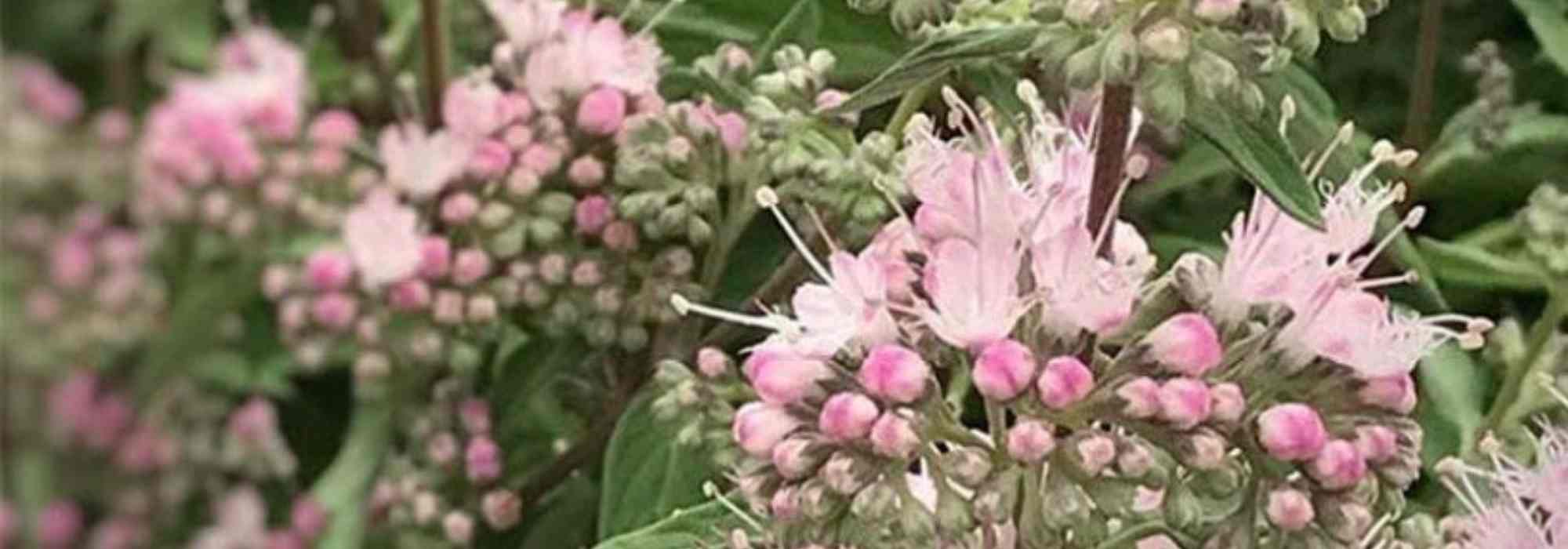
Growing Caryopteris in a pot
for the terrace or balcony
Contents
Caryopteris, also known as blue spiraea or bluebeard, is a stunning decorative bush, highly valued for its late summer flowering. It produces delicate small blue or pink flowers, clustered in bouquets, which are greatly appreciated by butterflies. Its deciduous leaves are also ornamental and aromatic when crushed. This is a sun-loving plant that thrives in a warm, bright location. Due to its small size, this shrub is easily grown in both open ground and pots. Discover all our tips for successfully cultivating Caryopteris in pots to enhance a terrace or balcony.
Which exposure to choose?
Caryopteris thrives in sun and warmth. Choose a sunny spot on the terrace or balcony. If you live in a cold region, place it against a south-facing wall, sheltered from cold winds. Be careful to move your pot outside once the risk of frost has passed.
Read also
7 ideas for pairing CaryoptérisWhat type of pot for a Caryopteris?
Caryopteris prefers deep, well-drained soil. To ensure it thrives, choose a large container or a pot with a minimum diameter of 50 to 60 cm and a height of 50 to 60 cm. The larger the container, the more comfortably Caryopteris will grow. In warm regions, opt for a terracotta pot which will better regulate temperature and provide improved aeration for the roots. In colder regions, you can also choose a terracotta pot. Note that a plastic pot will be easier to move if you winter your blue spiraea, but it will be less breathable for the roots.
Bluebeard is sensitive to stagnant moisture, especially in winter. Therefore, select a pot with drainage holes to facilitate water runoff and prevent root rot. Finally, place a saucer under your pot.
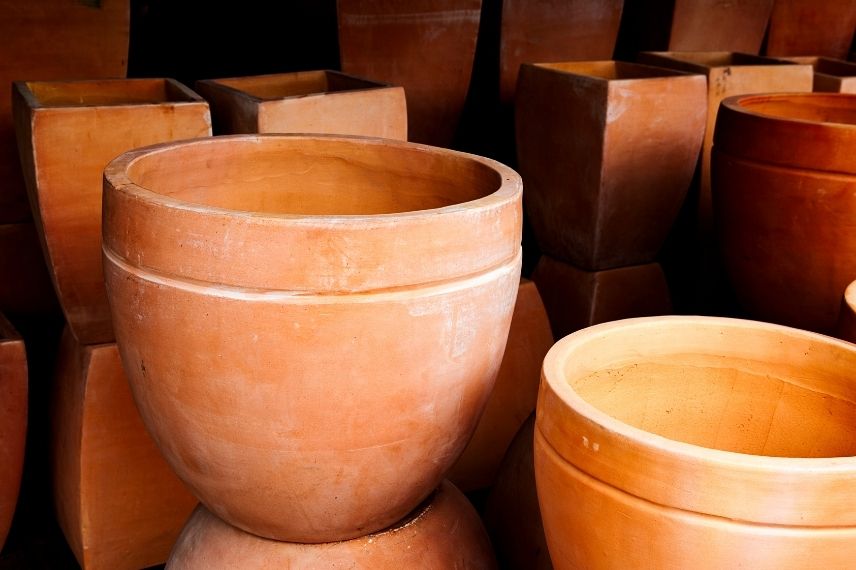
Large diameter terracotta pots
Discover other Caryopteris
View all →Available in 2 sizes
Available in 0 sizes
Available in 1 sizes
Available in 1 sizes
Available in 1 sizes
Available in 1 sizes
Available in 3 sizes
Available in 1 sizes
Available in 3 sizes
Available in 1 sizes
Which substrate to choose?
The blue spiraea prefers a light, well-draining substrate. First, place a layer of clay balls at the bottom of your pot, to facilitate water drainage. For optimal planting, then choose a light compost or mix 2/3 of compost for Mediterranean plants with 1/3 of pumice. You can also replace the pumice with gravel or perlite.
Read also
Choosing a CaryopterisWhich Caryopteris varieties to choose?
All varieties of Caryopteris are suitable for container or pot cultivation. However, it is better to choose a small Caryopteris, which will thrive more in a container. Potted shrubs tend to be more tender than those in the ground, so opt for a hardy species, such as Caryopteris clandonensis. Here are a few examples:
- The Caryopteris clandonensis ‘Petit Bleu’ is a compact variety, measuring 60 cm in all directions, with intense blue flowers on grey-green foliage.
- The Caryopteris clandonensis ‘Stephi’ is a floriferous and original variety thanks to its beautiful pale lilac flowering.
- The Caryopteris clandonensis ‘Heavenly Blue’ stands out with its violet-blue flowers above grey-green foliage.
- The Caryopteris clandonensis ‘Blue Balloon’ forms a rounded bush with dark green foliage and lavender-blue flowers.
- The Caryopteris divaricata ‘Electrum’ is a variety of spiraea appreciated for its exceptional hardiness and beautiful variegated foliage. Perfect for cold regions, but it does not tolerate the Mediterranean perimeter well.
When and how to plant a caryopteris in a pot?
When should I plant my Caryopteris in a pot?
The best planting time for blue spirea in a pot is in spring, in April-May, depending on your climate. Be sure to plant after the last winter frosts and outside of periods of intense heat.
How to plant a Caryopteris?
- Place at the bottom of your pot, a layer of clay balls about 5 cm deep, to prevent excess moisture
- Plant the root ball of your spirea in the centre of the pot. The top of the root ball should be 2 to 3 cm below the rim of the pot
- Add the substrate while keeping 2 cm from the edge of the pot
- Gently compact the soil with your hands
- Water generously
- You can add mulch to limit rapid evaporation of water and reduce watering
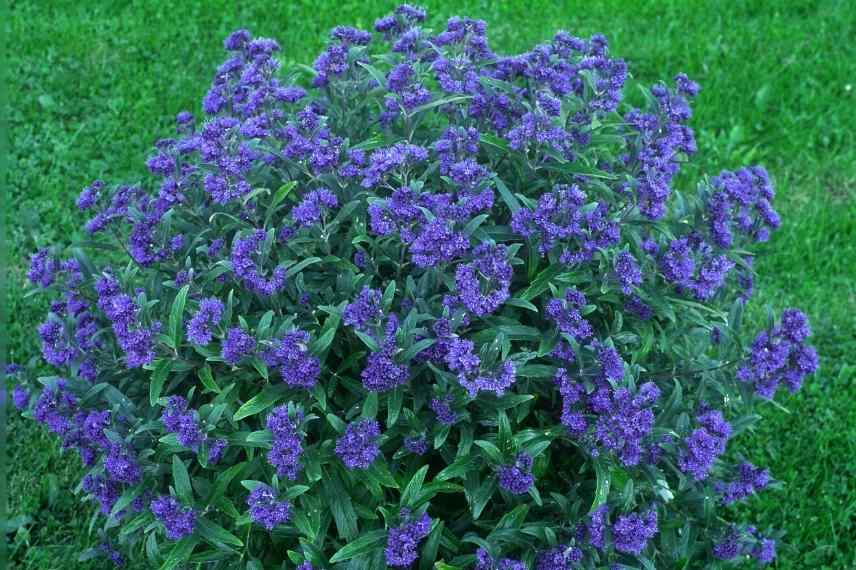
Caryopteris ‘petit bleu’ – Photo AC MINIER PALLIER Yvon
How to care for a Caryopteris in a pot?
Watering and fertilising
Water your Caryopteris in the absence of rain when the compost becomes dry. You can allow the substrate to dry out between waterings. Be careful not to drown this plant, as it does not like excess moisture. Remember to water more during heatwaves.
For beautiful foliage and flowering, provide it with fertiliser for flowering plants at the end of winter or a handful of well-rotted compost at its base.
Wintering Caryopteris
Depending on the variety, Caryopteris can withstand frosts down to -15° C. Keep in mind that a potted plant is more sensitive to cold than one in the ground. If you live in a region with a mild climate, you can leave your Caryopteris outside. Conversely, if you live in a cold region, place your pot in a sheltered corner of the garden or against a south-facing wall, then cover your plant with a winter fleece, and don’t forget to protect your pot as well (bubble wrap, blanket…). You can also bring your Caryopteris into a cold greenhouse or a bright, unheated room.
In winter, water moderately and only if necessary, about once every 3 to 4 weeks.
Repotting the Caryopteris
We recommend repotting your blue beard every 2 years to refresh its substrate. You can take this opportunity to give it a larger container.
When and how to prune Caryopteris?
Pruning should be done at the beginning of spring, around March-April. Using a shear, cut the branches by half, or even two-thirds. Also remove any dead wood and unsightly branches. This severe pruning helps maintain a dense, bushy habit while also limiting the height of the bush. This encourages beautiful flowering and extends the lifespan of your Caryopteris.
For further reading
- Discover all our varieties of Caryopteris.
- To learn everything about Caryopteris, find our tips on Blue Spirea: planting, pruning and care.
- Subscribe!
- Contents
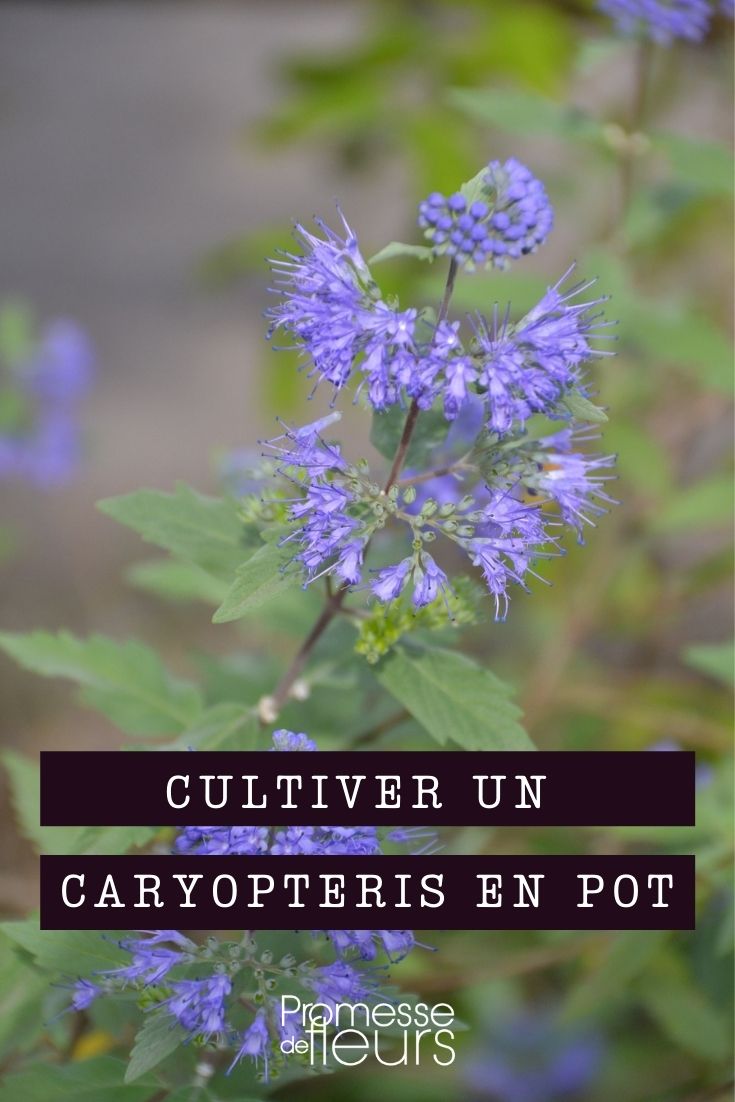






























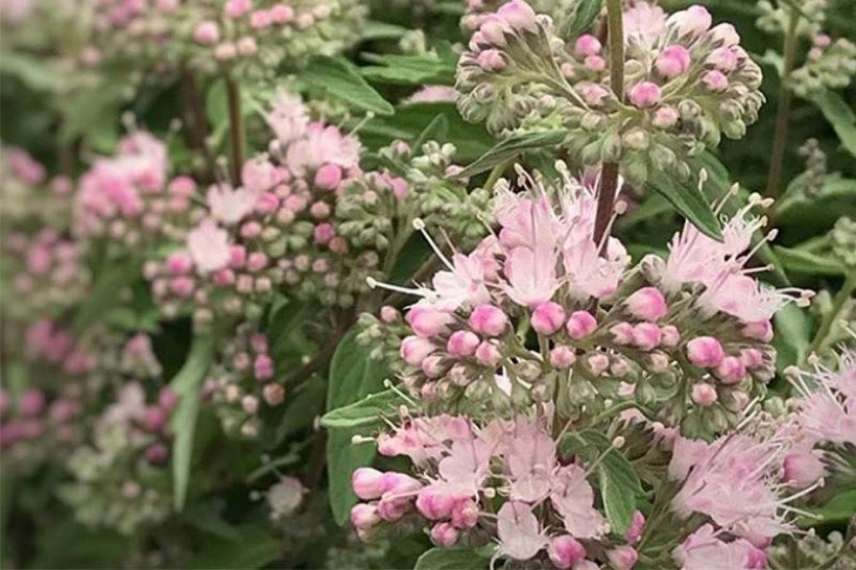

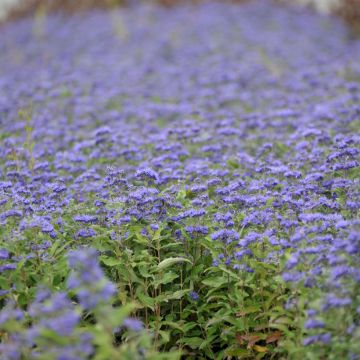
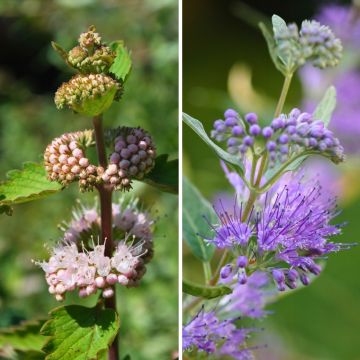
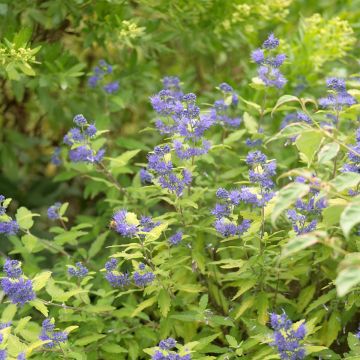
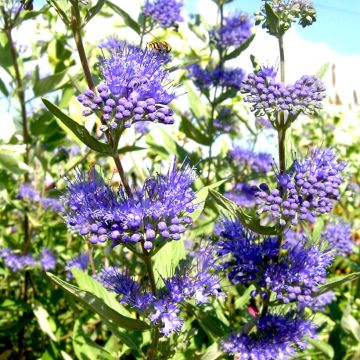
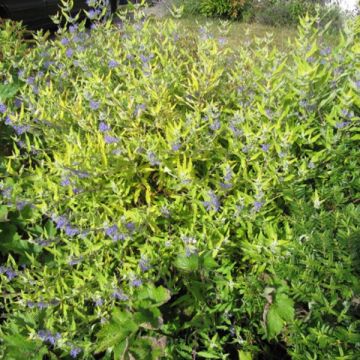
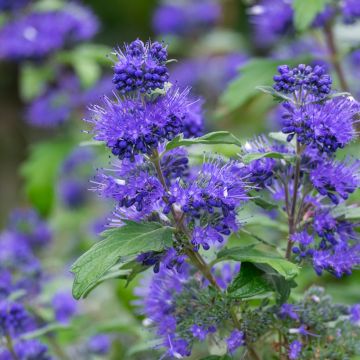
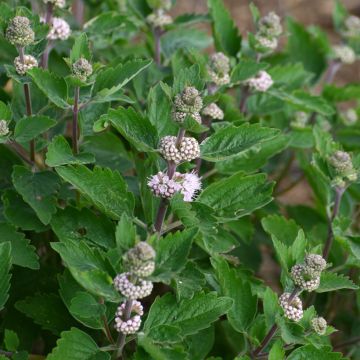
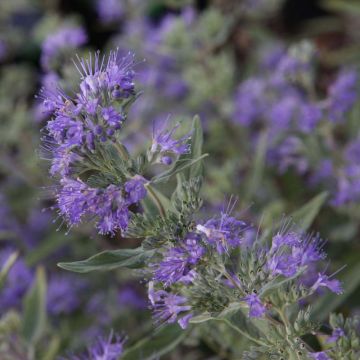
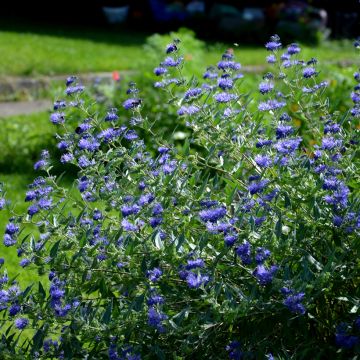
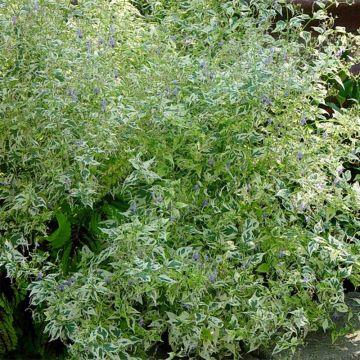
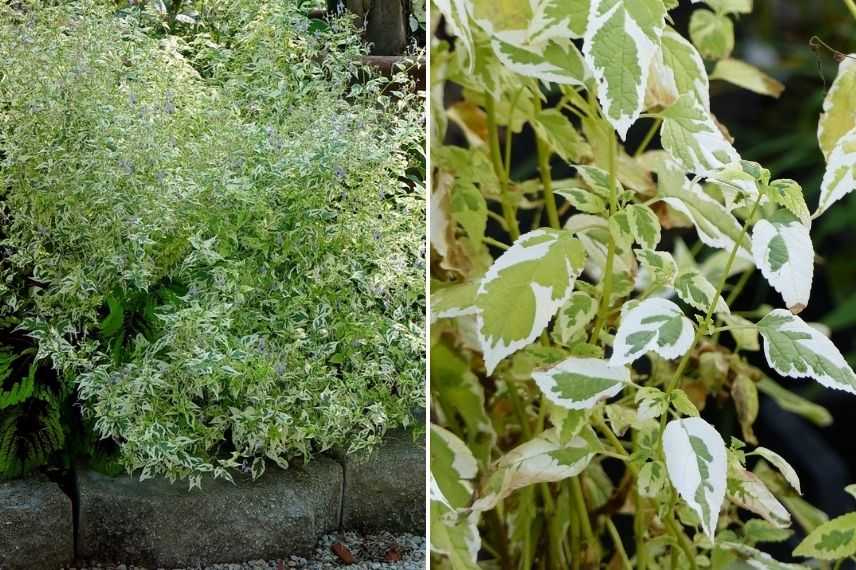
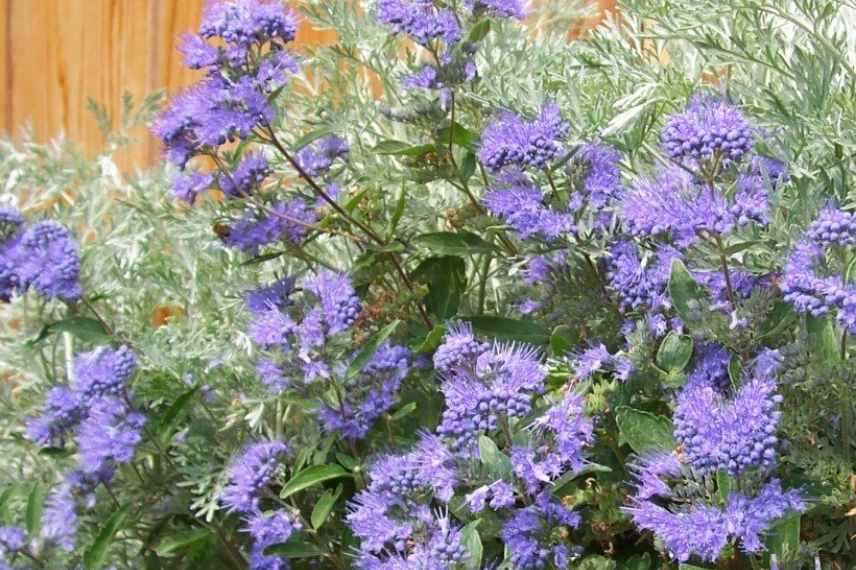
Comments